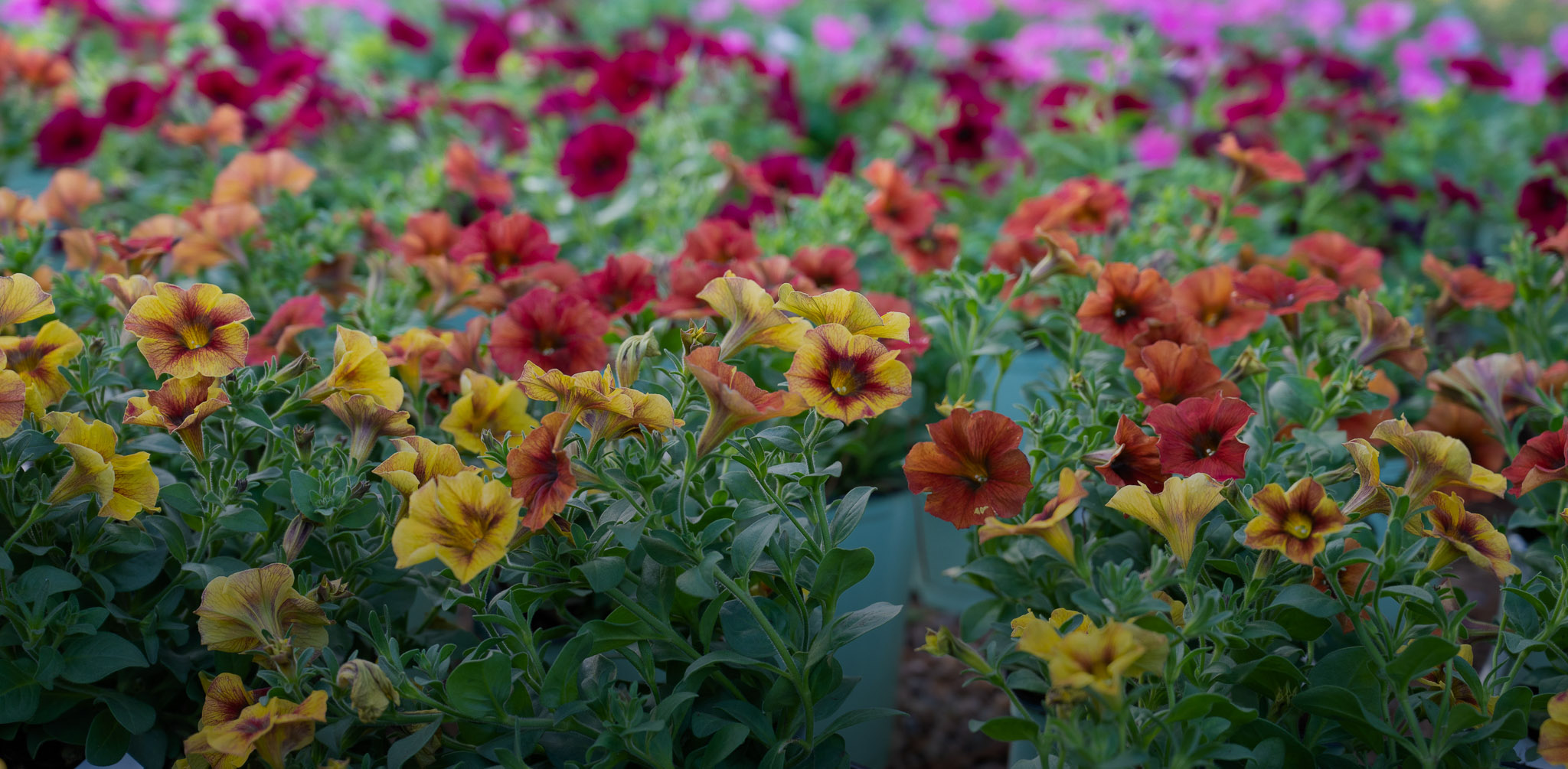
September & October Gardening
We continue into the season where many of you are making both changes and additions to landscapes and gardens. As you proceed, take time to research the plants you’re considering. One of the more common gardener mistakes is forgetting that plants grow – often much larger than we anticipate. The consequence is that years later, we end up with an overgrown jungle that may block the view from an inside window or hides too much of a home’s exterior.
When shopping for plants, always consider the projected size of a plant at maturity. Nursery signs provide that information and you can augment your data with individual research. In most cases you don’t want to use plants in front of windows that require a lot of pruning. Fortunately, growers have released more shrubs in recent years that tend to be slower and lower growing.
Herbs, Veggies and Perennials
As nights cool in late September, it’s time to plant vegetables and herbs for the cool season. Seed arugula, beets, cabbage, carrots, cauliflower, collards, lettuce, mustard, radishes, and turnips. Set out bulb onions. In October, add broccoli, Chinese cabbage, kohlrabi, spinach, and Bok choi. Herbs to seed include cilantro, parsley, French sorrel, salad burnet, sage, and thyme. Plant in full sun, and fertilize your plants periodically with a balanced fertilizer. If space is limited, plant in containers using a balanced potting mix.
Fall is colorful when you plant fall-blooming perennials such as firebush (Hamelia patens), firespike (Odontonema strictum), yellowbells (Tecoma stans), cigar flower (Cuphea micropetala), Mexican bush sage (Salvia leucantha), and pineapple sage (Salvia elegans). Wait until mid-October to plant cool-season annuals such as Petunias, Calibrachoa, Nemesia, Diascia, Dianthus and Alyssum ‘Snow Princess’. October to November you can start to add pansies and violas as the temperatures cool. As exciting as it is to plant these seasonal favorites, be sure to not plant them before dropping temperatures – they will not be able to take the late-summer heat not matter how much you water them.
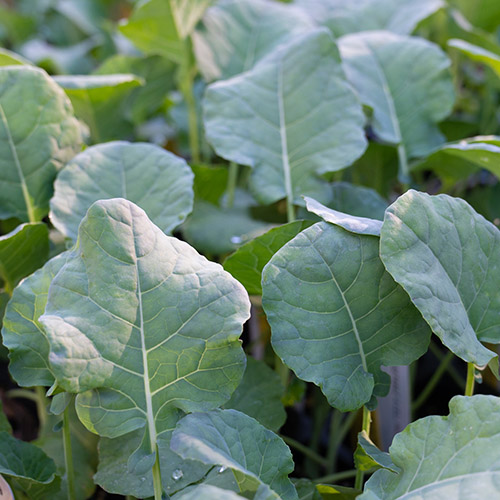
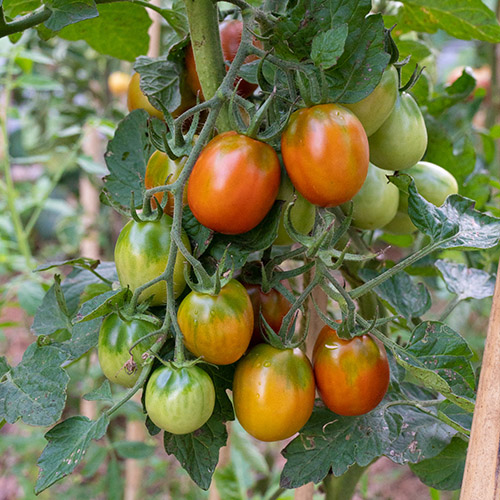

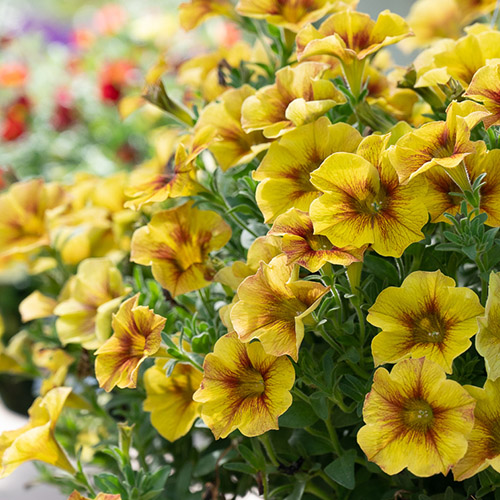
Trees, Shrubs and Fruits
Fall is a great time to plant trees and shrubs. Remember to water the new plants regularly. Add trees to your landscape that feature fall color, such as persimmon, crape myrtle, Chinese pistache, American hornbeam, Japanese maple, hickory, red maple, sweetgum, bald cypress, and black gum. As we move into fall and the camellia flowering season, it is a good time to visit the nursery to select camellias while in bloom. View our full Camellia Lookbook
Consider persimmon trees for both color and fruit. There are two basic groups of persimmon types, astringent and non-astringent. The astringent types are generally sweeter and juicier, but you must wait until they get completely ripe and jelly-soft to the touch. The non-astringent types may be eaten while still firm and crisp and generally have a milder or mellower taste. Plant in full sun to enjoy the spectacular view of the colorful fruit in the fall. It is a good landscape plant, though it can be messy when the fruit drops – best not to use as a patio tree.
Many citrus trees are only months away from maturity. Give your citrus its final fertilizing of the year in September. If it gets dry this fall, check the soil moisture and water as needed to help fruit develop. If you have very young, cold-sensitive types of citrus plan now for those hard freezes that can occur from late November onward. It’s much easier to calmly get the materials together now rather than hurriedly at the last minute when a cold front is approaching. Consider using rolled fence wire to make a protective cage around the plant that can be filled with pine straw or hay and wrapped with plastic sheeting to buffer the trunk from the cold.
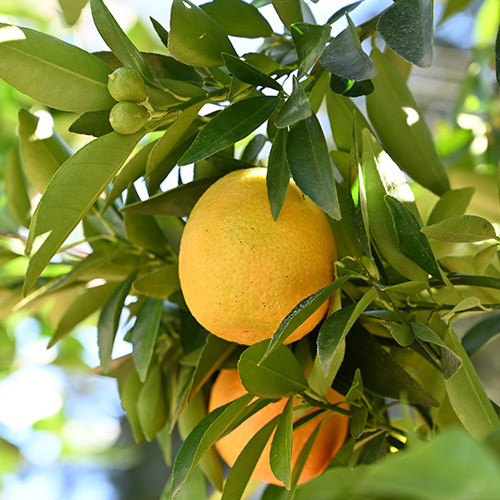
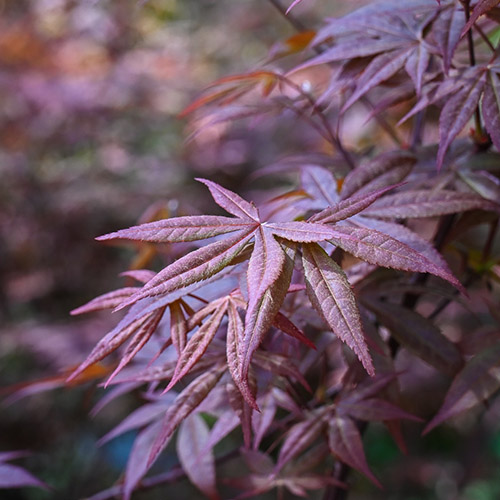
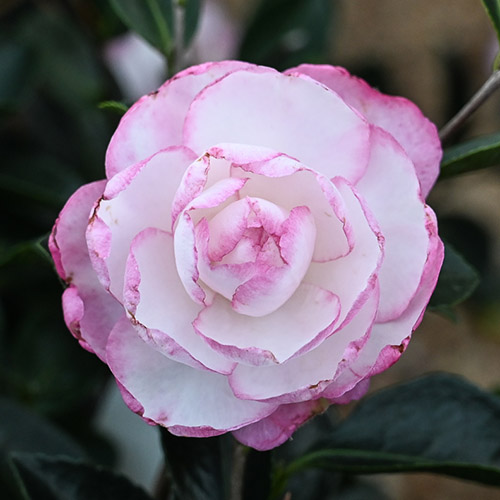
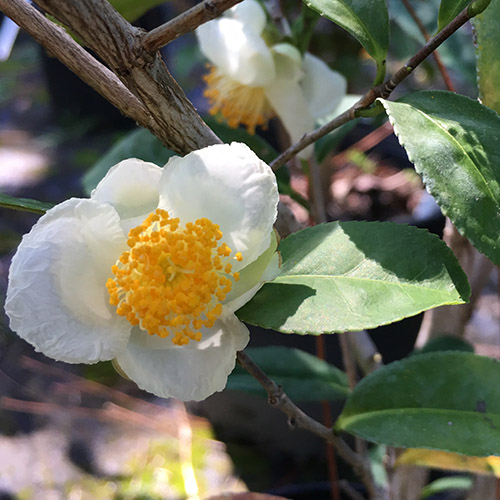
Lawn Maintenance and Damage
The first signs of sod webworms are a few small, off-color patches in the lawn. As time goes by, the patches become larger and the grass in the patch is thinner as the caterpillars chew away. Because these caterpillars are night-feeding, most homeowners never see the caterpillars themselves. As the caterpillars mature and eventually change into little brownish moths, you may notice them. The moths fly up as you mow the lawn or disturb adjacent shrubs. By then you may have also noticed that your lawn is rapidly disappearing. The moths don’t feed on your lawn, but they will produce more caterpillars which do feed.
It pays to detect the damage early and spray with an appropriate insecticide to control the caterpillars. Some gardeners prefer the bacterial insecticide, Bacillus thuringiensis (BT) because it will kill only the caterpillars and not beneficial insects in the lawn. However, it breaks down quickly in sunlight and is slower acting than conventional insecticides such as bifenthrin, cyfluthrin or permethrin. BT will need to be reapplied as the grass grows. Whichever insecticide you choose, make sure you choose one that gives directions for controlling lawn caterpillars such as sod webworms. Follow the label directions carefully. Re-treat as necessary.
Because the caterpillars are deep in the lawn, water will have to carry the insecticide down to them. If you choose a granular insecticide, it will have to be watered according to the label directions. If you use a liquid insecticide, apply it with enough water to wet the thatch layer at the soil line. The easiest way to apply a liquid insecticide is with a hose-end sprayer to which you attach the concentrate. Set the dial to mix the appropriate amount of water.
If you haven’t applied a lawn fertilizer since spring, consider applying a low-nitrogen, high potassium winterizer type fertilizer in September or early October. Be sure to water the lawn after application. If we go too long between rains and your lawn starts to show signs of wilt, water into the fall. It’s common to forget the lawn this time of year. It may start turning brown from lack of rain or from pest problems, but misinterpreted as fall color changes due to dormancy. Your lawn should stay green until we have frost and that doesn’t usually happen until November or December. Continue mowing your lawn regularly.
If you haven’t broadcast Amdro fire ant bait since spring, make a repeat application now. Use a hand spreader to apply the bait at the low rate required to your whole yard, or at least the sunniest areas of your yard.
To control weeds that proliferate lawns in spring, use your control methods in the Fall. In October, when night temperatures fall to 55-60 degrees for 4-5 days, apply a pre-emergent herbicide to prevent the emergence of cool-season annual weeds. Check the label of any herbicide before buying it to make sure it’s safe on your type of grass.
Every month is an exciting month to garden! Fall brings us refreshing temperatures, an array of veggies and a whole new set of color. We can’t wait to see your Fall gardens!
Don’t forget to send us pictures or bring them into the nursery to get additional care tips.
*This article was written by David W. Marshall, University of Florida Extension Agent Emeritus and Landscape Consultant with Tallahassee Nurseries

